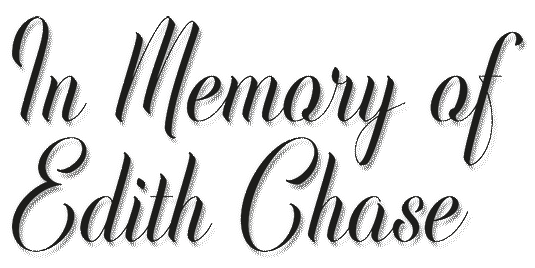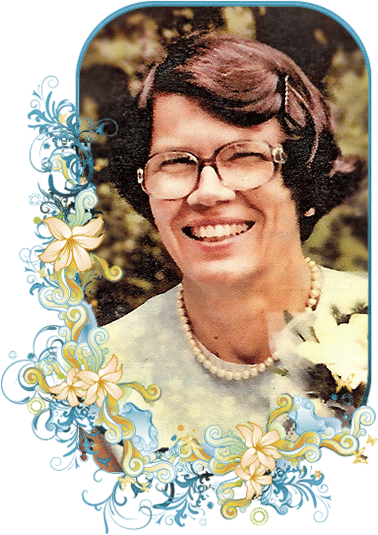

My name Is Bob Wilson. I had the privilege of serving with Edith on the board of the Kent Environmental Council for 10 years. I am also on the board of the Edith Chase Symposium Association, an organization established in Edith’s name to continue her lifelong work of raising public awareness of environmental issues here in the Cuyahoga River watershed and Lake Erie Basin.
On a personal note, my own father was a civil rights activist in the 1950’s and 1960’s when I was growing up. My brothers and sisters and I were very proud of him, but sometimes we were a little jealous of the NAACP, the Urban League, the Catholic Interracial Council, and other organizations, who “borrowed” our father for so many evenings and weekends. I mention this because it gives me some inkling of what it might have been like to have Edith Chase for a mother. So, on behalf of the Kent Environmental community, I would like to thank Richard and Barbara for loaning us their mother for 50 years.
We would have been happy to have her for 100 years, but we had to settle for 50. The Kent Environmental Council incorporated in 1970, but the core group began meeting informally 50 years ago in 1967, 2 years before that famous fire on the Cuyahoga which history says ignited the environmental movement. Edith and KEC were ahead of the curve. Our first leader, our first chairperson, was Edith Chase. Those of us who attempt to carry forward her work, are in awe of what she and her fellow conspirators accomplished—They started one of the first city and county recycling programs in Ohio, they instigated critical improvements to Kent’s Sewage treatment plant, and they turned our neglected river banks into Riveredge Park. Eventually Edith started our annual River Day, then personally organized it every spring for another 24 years, offering generations of children a natural perspective on the Cuyahoga. Even as the Kent Environmental Council settled in to become a local institution, Edith expanded her activity to the regional and national level. She helped Senator Glenn play a key role in establishing the Ohio Lake Erie Commission and in the ratification of the Great Lakes Compact.
Giants come in all sizes. The shorter and lighter Edith got, the bigger she seemed to us. When I think of my personal heroes, she is at the top of the list. I knew her by reputation before actively working with her, and I could spend a long time listing her many awards, but that is not what I mean when I call her a giant. In all the years I knew her, I never heard her say, “I won’t be here for the next meeting. I have to go to Michigan or Columbus to get another award.” Past accomplishments were never her focus. She was always looking forward. “What do we do next?” might be a fitting epitaph for Edith. Giants have big vision, and Edith’s vision sustained us for many years—and still does.
And, like most effective leaders, her approach was fundamentally positive. Environmental awareness can easily devolve into hopelessness. A lot of people look at huge problems like mass extinction or global warming and think, “what can I do? I am only one person.” Implicit in everything Edith did was her belief that if we work together, we can solve the big problems. She never settled for negative rationalization. She framed her questions more along the lines of “What can we do to start down the path towards a solution?” Positive thinking like hers is highly infectious. It’s downright communicable. It is how big things get done.
She wasn’t alone. Edith was at the core of a great group of people who shared her enthusiasm, many of them outstanding community leaders in their own right. But, she would have been the first to tell you it was not all about her, or Ruth Mead, or Ben Foote, or Harriet Begala, or Caroline Arnold, or Walt and Nancy Adams, or any of us who followed. All fine individuals, but It was as a group that they grew to match the size of the problems they set out to solve. Consider for a moment, the Cuyahoga River in 1967. It looked worn out after a century and half of hard use. It flowed through our old industrial cities like a night shift janitor, carrying away our trash and sewage, underpaid for services rendered, and mostly ignored. Somehow, Edith’s little group took on the river problem nobody seemed to want to look at. Now, 50 years on, their little park is the centerpiece of the redeveloped city of Kent Ohio.
Given that the word “ecology” comes from the Greek “oikos,” which means; household, home, or family, it seems appropriate that it was women like Edith, Ruth, and Caroline, who got us started down the path of restoring our local environment to a healthier and more natural state—a better home for our children and grandchildren. Her approach to leadership and problem solving is a model of feminine strength. Never one to fake it or BS her way through with street smarts, she was always prepared. She was a consensus builder and a team player. More a persuader than a conqueror, she often used the strength of others to get heavy lifting done. But this should never be mistaken for weakness or lack of resolve. She could stand up to anyone, quietly asserting and re-asserting the truth as she understood it. In a roomful of bluster, her voice was the one you remembered when the meeting was over. She believed in the democratic process, and in using every channel available to influence public policy. But, her involvement with power players on the state and national level did not change her approach to us local folk. It felt to us like her heart was always here. She had this respectful way of recruiting help: When she asked you to do some little task, you did it and felt proud to be asked. But, conversely, if you needed a volunteer for a messy job, like pulling weeds along the Haymaker Parkway, there she would be, on time, her hands shaking a little, but with garden gloves at the ready. She truly understood the complex mathematics of cooperation.
Great vision, positive thinking, a motivator and a team builder. What have I missed? Oh yes, there was the way she handled old age. If ever we need a model of how to keep wide awake and engaged until the end of the ride, it is Edith. The last time I saw her and Caroline Arnold together was at a summer board meeting. It was sparsely attended so we didn’t get much done, but Edith and Caroline lingered after, and just looked at each other. Edith said, “there won’t be many more times for as to talk and remember”, and they just sat together and shared the moment like wise old sisters. They were as strong facing the end of life as they were about the environment. Edith kept pushing forward until her body would no longer allow it, and even then, continued to plan and participate from afar. Chris Mallin, a driving force behind the Edith Chase Symposium, called Edith often to seek guidance and share progress reports with her. In his last conversations with her she told him how excited she was that young people like Christina Znidarsic, David Hassler, and Lynn Vogel were involved in this year’s symposium. I don’t think Edith was thinking of her own legacy. I think the source of her enthusiasm was the same spirit that moved her 50 years ago, when she saw the need to put our home, our watershed, our ecosystem back into balance. Historically we think of great American men digging canals and building railroads, dams and fabulous bridges, taming nature and conquering wilderness. How fitting then, that we should celebrate this woman, our friend and mentor, for leading us towards a reconciliation with nature. Her monuments are cleaner air and water, trails beside rivers and leafy sanctuaries, a healthier Lake Erie and better institutional protection for its future. The best way we can honor Edith’s life of service is to pay it forward, to continue identifying the problems and organizing towards solutions. Let us be charged with her question: “What do we do next?”